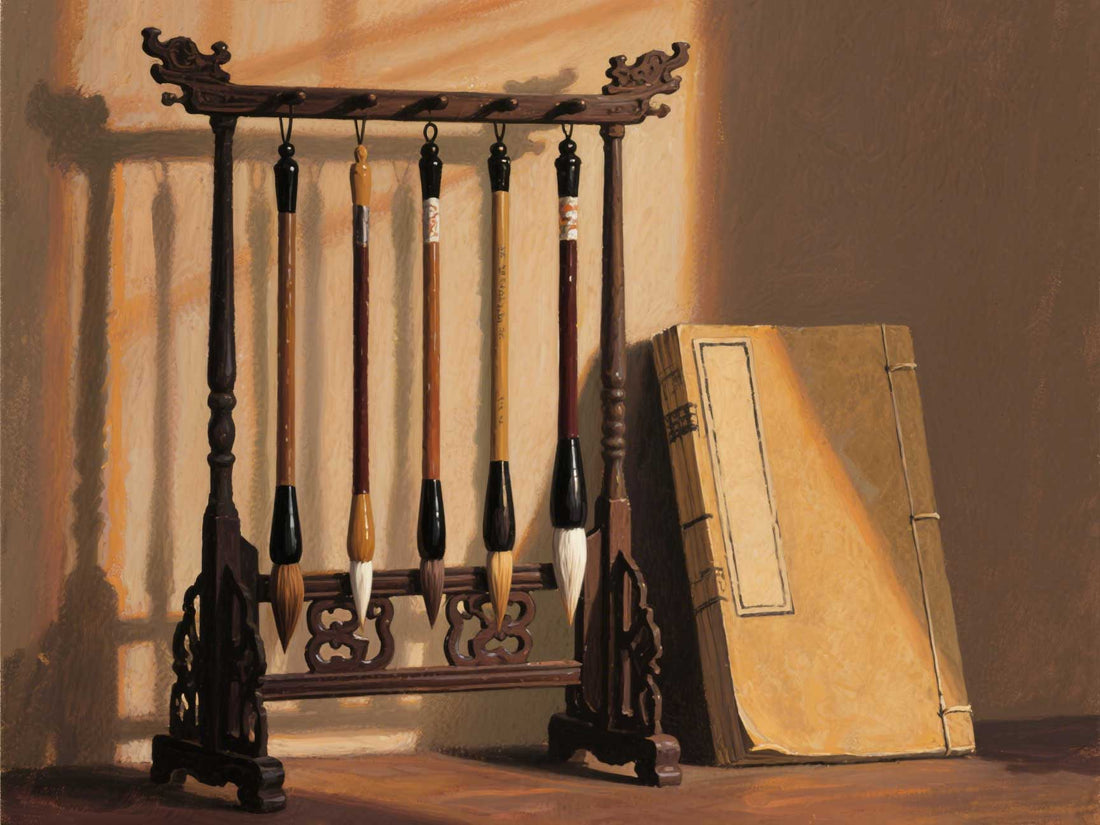
How do beginners choose a brush? A beginner’s guide to avoiding pitfalls!
Share

For calligraphy beginners, choosing a brush that suits them is like fitting glasses for a blind person - choosing the wrong tool is not only a waste of money, but may also dampen enthusiasm for learning. As a beginner with no basic knowledge, when faced with a wide variety of brushes, you only need to grasp four core principles to avoid 90% of purchasing misunderstandings.
1. Material selection: Mixed hair is the best starting point
According to the material of the brush, it can be divided into wolf hair (weasel hair), sheep hair,
There are three types of brushes: rabbit hair, purple hair (rabbit hair) and mixed hair. Pure wolf hair has strong elasticity but can store little ink, which can easily lead to dry brush strokes when writing regular script; pure goat hair absorbs water well but is difficult to control, which is a disaster for novices who lack wrist strength. A combination brush (such as the seven wolves and three sheep ratio) has both elasticity and ink storage capacity, just like the "training wheels" of a bicycle, which can help beginners perceive the changes in force of lifting, pressing and turning.
2. Price positioning: mid-range is the best value for money
There are two common extremes among beginners: either they are greedy for cheap "explosive brushes", or they are superstitious about expensive "master-made brushes". According to the author's actual tests, low-priced pens generally have problems such as soft pen waists, severe hair loss, and easy splitting when drawing; although high-end pens are made of exquisite materials, novices have not yet formed a stable feel for them, making it difficult for them to perform well. It is recommended to choose a moderately priced mid-range mixed-hair brush. This type of product mostly uses a mixture of artificial and real hair, which can not only guarantee basic writing performance but also has a high cost-effectiveness.
3. Size control: matching font size
The specifications of brushes are often marked as "large/medium/small regular script", but in fact, we should pay attention to the specific parameters:
Pen tip diameter : 0.8-1cm for characters with a square size of 3-5cm
Tip length : 3.5-4cm is the easiest to control for a medium-sized pen
Pen thickness : The bamboo pen with a diameter of 0.8-1cm can prevent your hand from slipping. If you plan to specialize in small regular script such as "Lingfei Jing", you can prepare a wolf hair brush with a tip of 2cm; if you practice Yan style large characters, you will need a large goat hair brush with a diameter of more than 1.2cm. Avoid using a long-tipped brush to practice regular script, otherwise the problem of "too much ink in the belly of the pen and the pen tip out of control" may easily occur.
4. Tips for avoiding pitfalls: Beware of three major consumer traps
Set trap : Taobao's "Four Treasures of the Study Set" often comes with uncommon pen types such as the Dou pen and the Changfeng pen, and the actual usage rate is less than 20%.
Appearance trap : Pen holders with dragon and phoenix carvings and gift boxes are overpriced, while ordinary bamboo pens with bare stems are more practical
Metaphysical trap : the so-called "pure tail hair" and "wild wolf hair" are mostly hype concepts. Beginners do not need to pursue rare hair materials
Tips and maintenance of test pen
When opening a new pen, soak it in warm water for 3 minutes and gently pinch the pen tip to loosen the glue. When testing ink, dip the brush into ink to 1/3 of the belly of the brush, draw the word "∞" on a piece of scrap paper, and observe the effect of focusing the tip of the brush. Avoid inserting the pen tip downwards into the pen holder during daily use. Hang it in the shade to dry after washing to extend its life.
In the initial stage of learning, there is no need to worry about "getting it right in one step". As your pen control ability improves, you can gradually try brushes with different characteristics. Remember: writing characters ultimately depends on the hand rather than the pen, and diligent practice is the key to progress. As Mr. Qi Gong said: "There is no good or bad pen, only practice makes perfect." Choosing the right tools can make your learning process more efficient.
